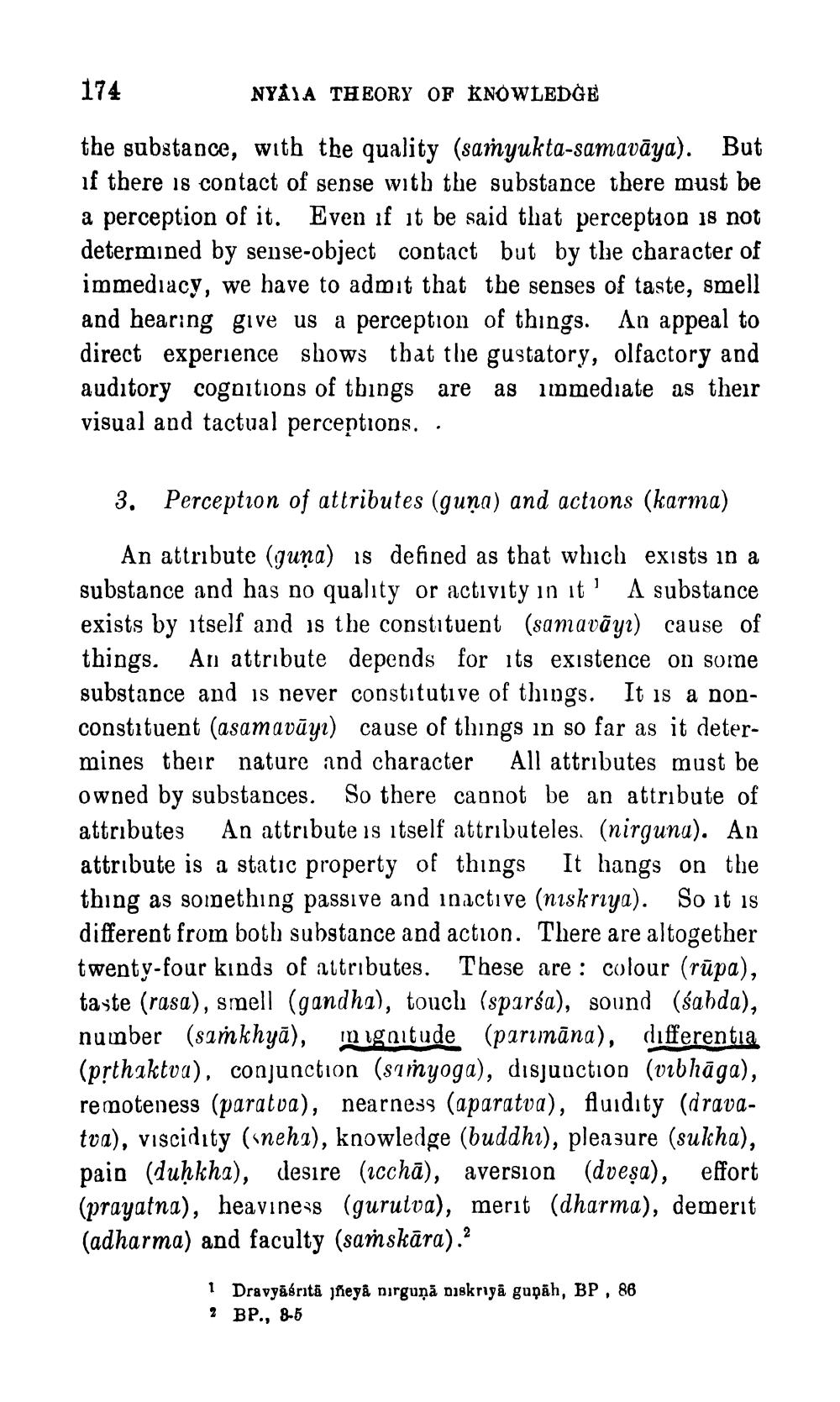________________
174
NYÅIA THEORY OF KNOWLEDGE
the substance, with the quality (samyukta-samavāya). But if there is contact of sense with the substance there must be a perception of it. Even if it be said that perception is not determined by sense-object contact but by the character of immediacy, we have to admit that the senses of taste, smell and hearing give us a perception of things. An appeal to direct experience shows that the gustatory, olfactory and auditory cognitions of things are as immediate as their visual and tactual perceptions. ·
3. Perception of attributes (guna) and actions (karma)
An attribute (guna) is defined as that which exists in a substance and has no quality or activity in it! A substance exists by itself and is the constituent (samavāyr) cause of things. An attribute depends for its existence on some substance and is never constitutive of things. It is a nonconstituent (asamavūyr) cause of things in so far as it determines their nature and character All attributes must be owned by substances. So there cannot be an attribute of attributes An attribute is itself attributeles. (nirguna). An attribute is a static property of things It hangs on the thing as something passive and inactive (niskriya). So it is different from both substance and action. There are altogether twenty-four kinds of attributes. These are : colour (rūpa), taste (rasa), smell (gandha), touch (sparsa), sound (sabda), number (samkhyā), in ignitude (parimāna), differentia (přthaktva), conjunction (simyoga), disjunction (vibhāga), remoteness (paratva), nearness (aparatva), fluidity (dravatva), viscidity ( nehı), knowledge (buddhi), pleasure (sukha), pain (duḥkha), desire (icchā), aversion (dveșa), effort (prayatna), heaviness (gurutva), merit (dharma), demerit (adharma) and faculty (sarskāra).
1 Dravyābritā jñeya Dirguņā diskriga gupāh, BP, 86 2 BP., 8-5




